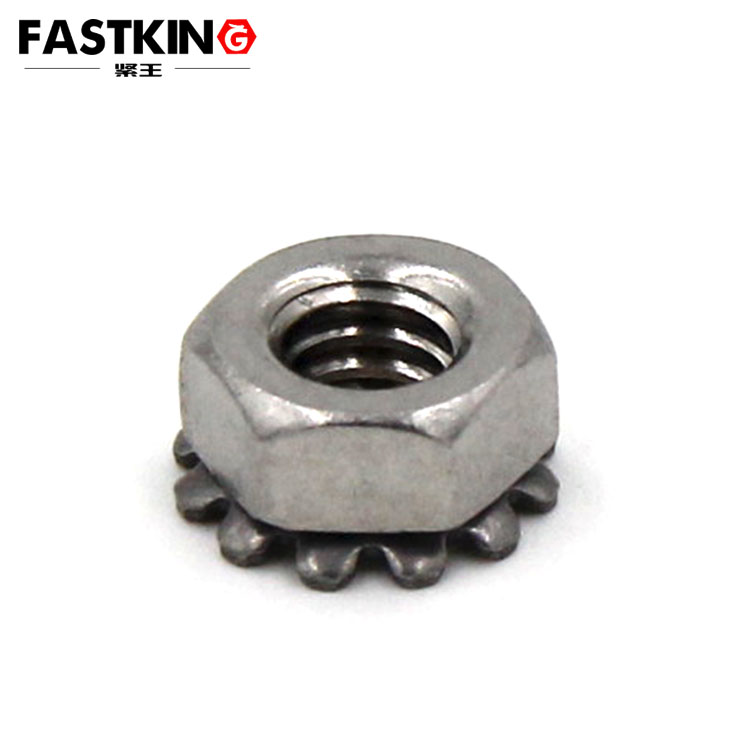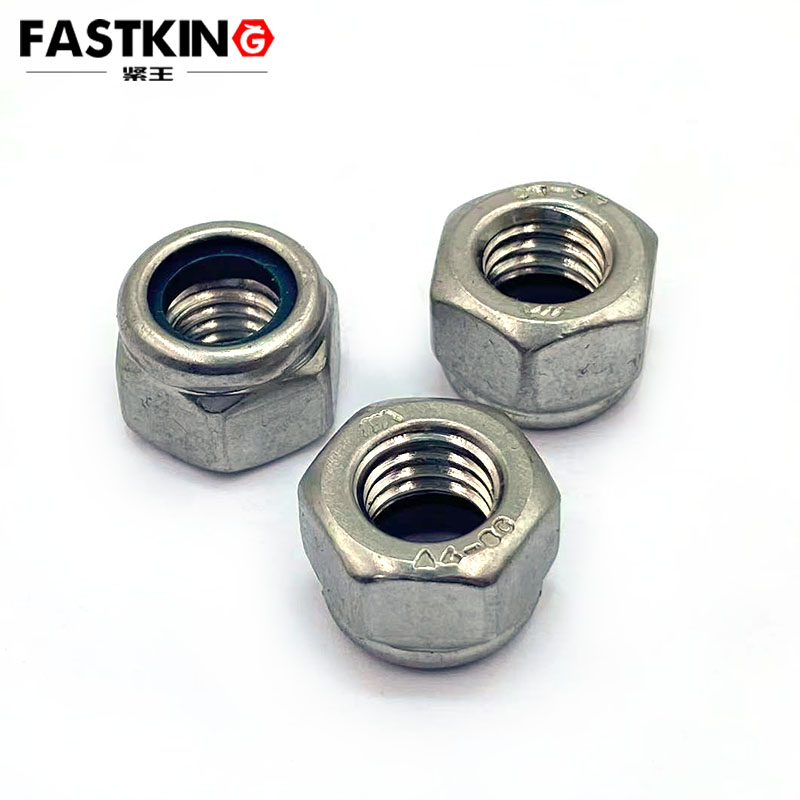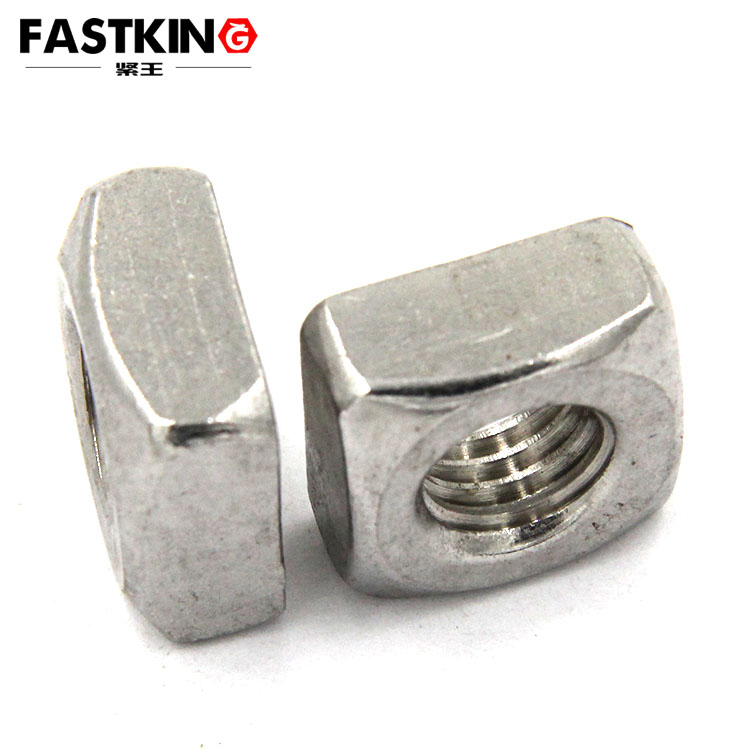I. Product Definition & Core Structure: A Breakthrough in "Integrated Design" K-type nuts, officially named "hexagon nuts integrated with toothed spring washers", belong to the derivative category of hexagon nuts. Their core recognizability stems from three structural features: hexagonal outer diameter, 65 manganese steel toothed spring washer, and K-shaped side profile. Together, these three elements form a functional carrier integrating "fastening + anti-loosening" capabilities.
From the perspective of appearance and structural details, the design of K-type nuts centers on "practicality and recognizability":
-
Hexagonal Outer Diameter: It inherits the classic shape of ordinary hexagon nuts, with nominal diameters ranging from M4 to M24. Compatible with standard open-end wrenches, box-end wrenches, and other tools, it ensures uniform force distribution during tightening, preventing nut deformation caused by local stress concentration. The dimensional accuracy of the six edges complies with GB/T 6170 (Standard for Ordinary Hexagon Nuts), enabling perfect compatibility with bolts of the same specification.
-
Integrated Toothed Spring Washer: This is the core feature distinguishing K-type nuts from other nuts. On one end of the nut body (the end face in contact with the connected component), a ring-shaped toothed spring washer made of 65 manganese steel is "inlaid" via stamping or welding processes. The washer thickness typically ranges from 1.5mm to 3mm (increasing with nut specification), with 6-8 sharp teeth evenly distributed on its surface, and the tooth tips face the connected component. 65 manganese steel is selected for its high elastic limit (elastic modulus up to 206GPa) and high strength (tensile strength ≥1000MPa), allowing it to maintain elasticity after repeated compression and avoid washer failure.
-
K-Shaped Side Profile: When viewed from the side of the nut, the inlaid toothed spring washer extends outward from the edge of the nut body, forming a raised line similar to the letter "K" together with the hexagonal contour of the nut. The toothed part of the washer forms the "vertical stroke" of "K", while the hexagonal edges of the nut form the "diagonal stroke" of "K". This unique side shape is the direct origin of the name "K-type nut" and also helps workers quickly identify it during assembly, avoiding confusion with ordinary nuts.
Compared with the combination of "ordinary hexagon nut + independent washer", the "integrated design" of K-type nuts completely eliminates issues such as "separate storage of washers and assembly misalignment". A single component can achieve the dual functions of "fastening + anti-loosening", significantly simplifying the assembly process.
The core value of K-type nuts lies in "anti-loosening reliability". Their anti-loosening effect relies on the synergistic action of "physical locking" and "elastic compensation" of the 65 manganese steel toothed spring washer, which can be broken down into two key links:
Ordinary spring washers only increase the friction of the thread pair through axial pressure generated by elastic deformation, and their anti-loosening effect is easily affected by vibration. When equipment operates and generates high-frequency vibration, the friction between thread pairs gradually decreases, leading to nut loosening. In contrast, the toothed spring washer of K-type nuts undergoes two key actions during nut tightening: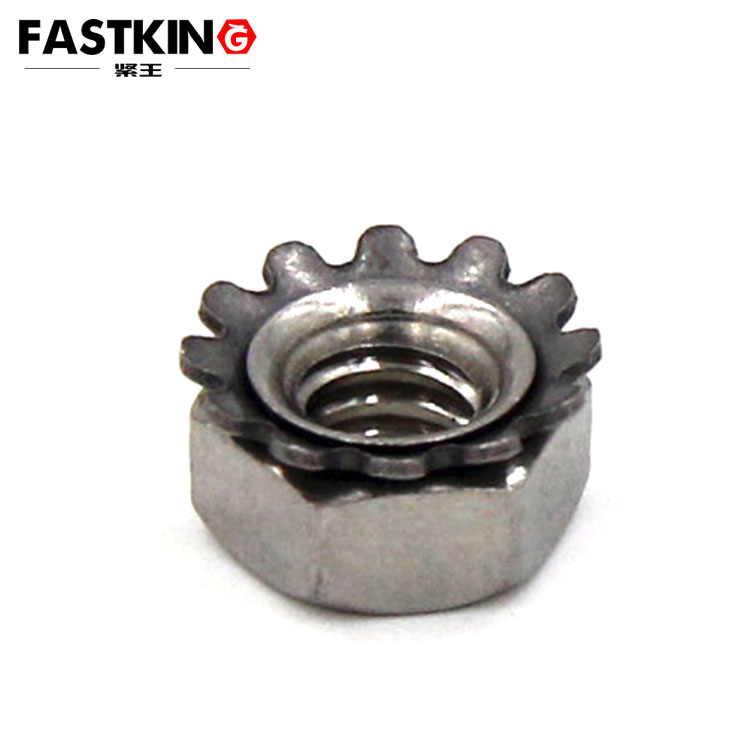
-
First, the elastic structure of the washer is compressed, generating axial preload to increase the friction between the bolt and nut threads. This step is consistent with that of ordinary spring washers;
-
More importantly, under the action of preload, the sharp teeth of the washer "embed" into the surface of the connected component (especially materials with good plasticity such as steel and aluminum), forming a physical "tooth engagement lock". These teeth act like tiny "tenons", restricting the circumferential rotation of the nut relative to the connected component. Even if vibration causes a decrease in thread friction, the mechanical engagement between the teeth and the connected component can still block loosening. The anti-loosening effect is 2-3 times better than that of ordinary washers.
This dual anti-loosening method combining "friction + physical locking" makes K-type nuts particularly suitable for scenarios with frequent vibration, such as the connection of automotive engine brackets and power tool casings.
The long-term effectiveness of the anti-loosening effect is inseparable from the material advantages of the 65 manganese steel toothed spring washer:
-
65 manganese steel belongs to the category of spring steel. After quenching and tempering, its elastic deformation capacity is far superior to that of ordinary low-carbon steel washers. After the nut is tightened, the washer remains in a "micro-compression" state. When equipment experiences increased thread gaps due to temperature changes (e.g., thermal expansion and contraction during engine operation) or vibration, the elasticity of the washer actively "compensates" for the gaps, maintaining stable axial preload and preventing loosening of the thread pair due to excessive gaps;
-
At the same time, 65 manganese steel has excellent fatigue resistance, capable of withstanding more than 10^6 vibration cycles without plastic deformation. This ensures that the anti-loosening effect does not diminish during the service life of the equipment (e.g., 5-8 years / 200,000 kilometers for automobiles).
In contrast, ordinary low-carbon steel washers are prone to "elastic failure" after long-term use, leading to reduced anti-loosening capabilities. The manganese steel washer of K-type nuts, however, guarantees long-term anti-loosening performance from the material perspective.
K-type nuts occupy a place among numerous fastening accessories due to their threefold advantages in "assembly efficiency", "anti-loosening reliability", and "scenario adaptability":
In traditional fastening solutions, workers need to sequentially pick and place bolts, nuts, and spring washers, requiring three steps to complete assembly. This is not only time-consuming but also prone to rework due to washer dropping or misalignment. K-type nuts integrate the "nut + washer" into one component, allowing workers to complete assembly with a single part pick-up, increasing assembly efficiency by approximately 40%. This advantage is particularly significant in mass production scenarios (e.g., home appliance production lines, automotive assembly lines), directly reducing labor costs and production cycle time.
For example, after switching to K-type nuts in the production of washing machine drum brackets, a home appliance enterprise increased the daily assembly volume of each production line from 1,200 units to 1,700 units, and reduced the rework rate from 5% to 0.3%, achieving remarkable results.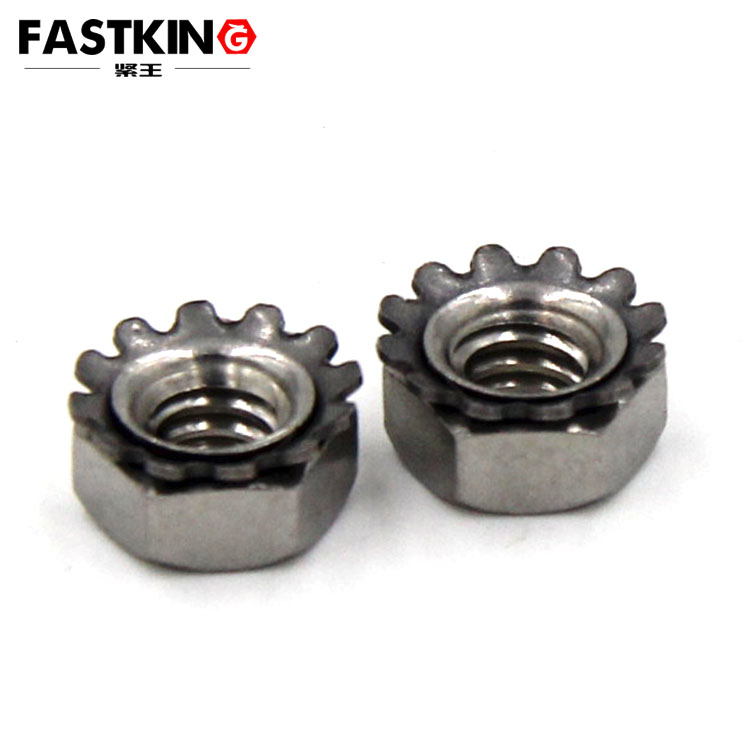
Benefiting from the "toothed + manganese steel" washer design, K-type nuts can adapt to complex working conditions such as vibration, impact, and temperature fluctuations:
-
In vibration conditions (e.g., power tools, fans), the physical locking of the toothed washer can resist loosening caused by high-frequency vibration;
-
In impact conditions (e.g., construction machinery, transport vehicles), the high strength of the manganese steel washer can prevent washer breakage;
-
In temperature fluctuation conditions (e.g., connections near automotive exhaust pipes), the thermal stability of manganese steel can reduce preload loss caused by thermal expansion and contraction.
Third-party test data shows that in a 1000Hz high-frequency vibration test, the combination of ordinary nuts and washers showed obvious loosening after 2 hours, while K-type nuts maintained over 90% of their preload after 8 hours.
The toothed washer design of K-type nuts enables compatibility with connected components made of various materials such as steel, aluminum, and cast iron:
-
For steel connected components, the teeth can embed into the surface oxide layer to form a stable engagement;
-
For softer materials such as aluminum, the tips of the washer teeth undergo passivation treatment (to avoid excessive scratching), ensuring locking effect while preventing damage to the surface of the connected component;
-
Combined with K-type nuts with different surface treatments (e.g., galvanizing, Dacromet), they can also be used in humid and lightly corrosive environments (e.g., outdoor lighting, agricultural machinery), further expanding applicable scenarios.
The characteristics of K-type nuts make them widely used in fields requiring "fast assembly + long-term anti-loosening". Typical scenarios include:
-
Accessories around the engine (e.g., water pump brackets, generator fixing): These need to resist high-frequency vibration of the engine. The toothed washers of K-type nuts can prevent loosening and avoid failures caused by accessory detachment;
-
Chassis suspension system (e.g., stabilizer bar connections): These bear impact loads. The high strength of the 65 manganese steel washer ensures long-term reliability and reduces maintenance frequency.
-
Casing connections of tools such as electric drills and angle grinders: Frequent use generates vibration. K-type nuts do not require additional washers, enabling convenient assembly and reliable anti-loosening, reducing after-sales maintenance rates;
-
Motor fixing for washing machines and air conditioners: Mass production requires efficient assembly. The integrated design of K-type nuts improves production line efficiency while adapting to vibration during motor operation.
-
Cab bracket connections of excavators and loaders: Outdoor working environments are harsh. The galvanized/Dacromet surface treatment of K-type nuts provides rust resistance, and the anti-loosening effect of the toothed washers adapts to bumpy working conditions;
-
Implement hanger fixing for tractors: Frequent disassembly and installation are required. The anti-loosening effect of K-type nuts can prevent implement loosening during operation, ensuring safety.
To fully leverage the advantages of K-type nuts, attention should be paid to selection and installation details:
-
Specification Compatibility: The thread specification must fully match the bolt (e.g., M8 bolts with M8 K-type nuts) to avoid reduced anti-loosening effect due to excessive thread gaps. Meanwhile, select the nut height based on the thickness of the connected component to ensure the washer can fully contact the surface of the connected component.
-
Material Compatibility: Prioritize K-type nuts with materials similar to the bolt (e.g., carbon steel bolts with carbon steel K-type nuts, stainless steel bolts with stainless steel K-type nuts) to avoid galvanic corrosion. For humid environments, prioritize products with galvanized or Dacromet surface treatment.
-
Installation Specifications: Use a torque wrench to tighten according to the recommended torque (e.g., recommended torque for M10 K-type nuts is 25-30N・m) to avoid tooth breakage of the washer due to over-tightening or insufficient preload due to under-tightening. During assembly, ensure the washer teeth face the connected component (not the nut body); otherwise, effective locking cannot be achieved.
Although K-type nuts are "small components" in hardware fastening accessories, through the integrated design of "nut + toothed washer", they integrate the two major needs of "efficient assembly" and "reliable anti-loosening", responding to the development trend of "cost reduction, efficiency improvement, and reliability enhancement" in modern industry. Unlike nylon lock nuts with complex inserts or cap nuts with protective structures, K-type nuts demonstrate irreplaceable value in specific scenarios by optimizing and upgrading the "traditional nut + washer" combination.
Essentially, the innovation of K-type nuts is not a disruptive breakthrough but a precise solution to the "pain points of existing fastening solutions". It simplifies assembly and enhances anti-loosening reliability. This "seeing the big from the small" design concept is the core driving force for the sustainable development of the fastener industry and also provides an "integration" reference direction for the innovation of other hardware accessories.

